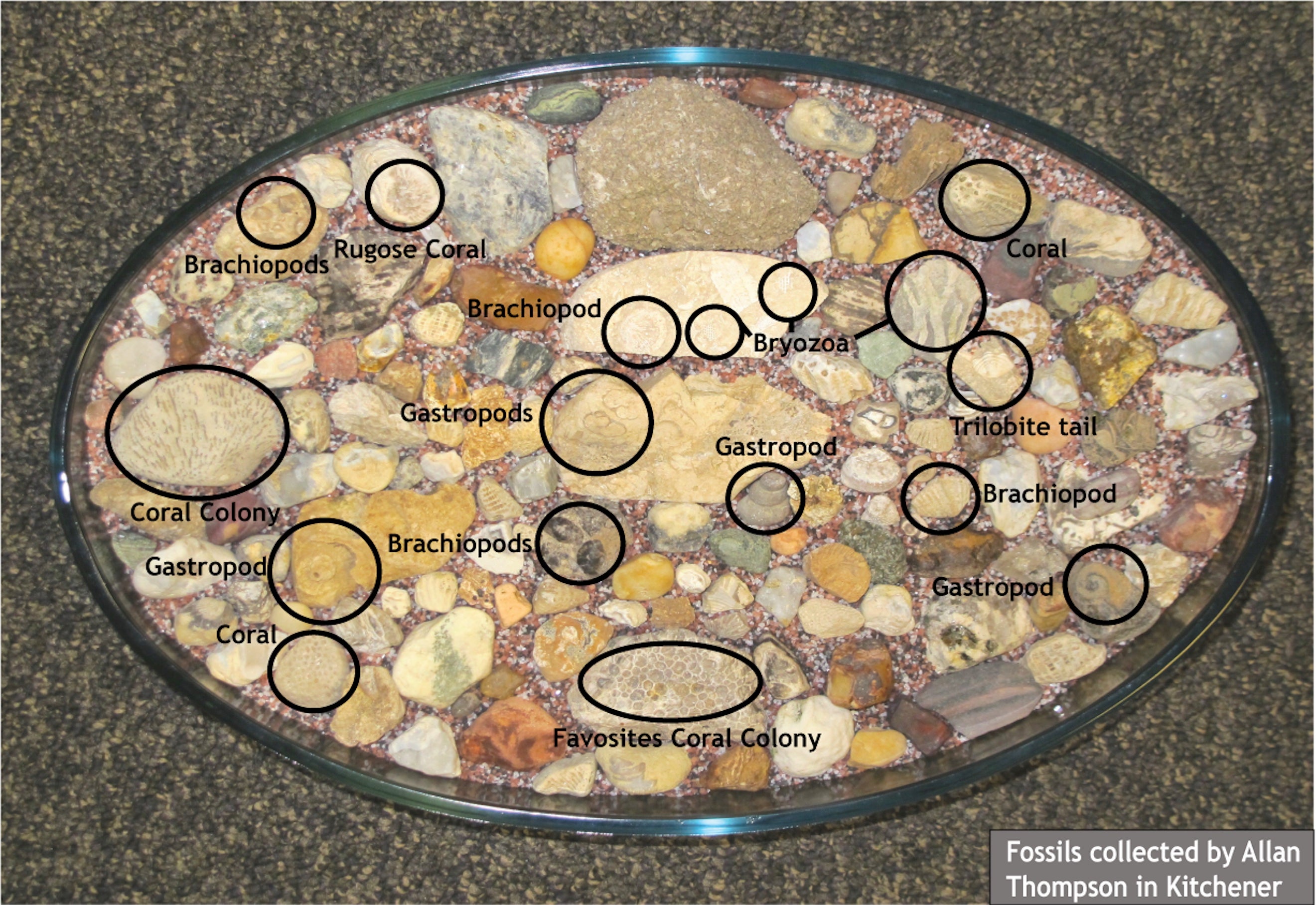Many people believe that in order to find good fossil specimens one must go to special locations outside of Waterloo county. But, in fact, you can find fossils which were formed in a tropical sea that covered this area over 400 million years ago. They were transported here during the ice age by massive glaciers and are now waiting to be picked up by you!
Allan Thompson, a friend of the museum, collected all of the specimens in the display below locally. He prepared them and gave them to Peter Russell as they provide a great example of what can be found just by searching through patches of stone and gravel around the cities of Kitchener and Waterloo.
In the Ordovician and Silurian time periods (485-419 million years ago) this area was a tropical sea with corals. This was a similar place to the coral islands and reefs we see in places like Australia today. Found in these ancient reefs were many different forms of life. Shown by the fossils in the pictures below are a few examples of these ancient creatures.

Kitchener fossils collected by Allan Thomson.
Brachiopod: A brachiopod is a hard-shelled marine animal that is distinguished from mollusks by the placement of its valves. It attached itself to rocks and fed by opening the two halves of its shell with complex muscle systems or a toothed hinge. While fossil species are abundant and common, brachiopod species are rare in the oceans today.
Bryozoa: Commonly known as moss animals, bryozoa are aquatic invertebrate animals that collect food particles from the water using tentacles lined with cilia. They grow in large colonies and are still found in relative abundance today.
Corals: Marine animals that grow in compact colonies and are still important reef builders today. They form hard shells by secreting calcium carbonate and feed through either catching food with small stinging tentacles or more commonly, algae that live in the coral's tissue.
- Favosites: An extinct variety of coral with polygonal, closely packed corallites that transfer nutrients between polyps with holes, known as mural pores, in the walls of the polyps.
- Rugose: An extinct variety of coral that is also known as horn coral due to its shape. Unlike most corals, rugose coral grows as individual corallites rather than in grouped colonies. It is believed that these corals used stinging tentacles to capture their food.
Gastropod: Known more commonly as snails, gastropod means stomach (gastro) foot (pod) in reference to the creatures use of their body as one muscular, creeping foot. They have a calcareous, coiling shell and glide along the sea bottom grazing or scavenging for food. Some are predatory, drilling through the shells of their pray or harpooning their prey with a poisoned barb.
Trilobite: An invertebrate named for the 3 lobes that run lengthwise down their calcareous exoskeletons. Trilobite fossils are common because they shed their hard exoskeletons to grow leaving potential fossil material behind many times in their life cycle. As seen in the picture below, trilobite tails or pygidium, are the most common fossil piece of trilobites as they are the most rigid section of the trilobite.